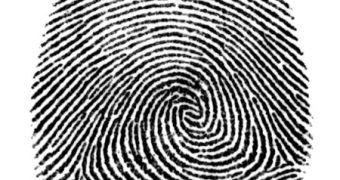A British researcher has developed a new and potentially groundbreaking technique of identifying fingerprints from metal objects, even after they have long since disappeared from, for example, a bullet casing. The method will be tested soon, and, if it proves to work, it could be the key to solving murder cases and other violent crime mysteries that have been left alone for decades. Time Magazine cited this new invention as one of the 50 to have appeared in 2008 and commended its creator for his ingenuity.
Working with the Bristol Police Department, in Connecticut, Dr John Bond, a scientific support manager for the Northamptonshire Police Department and a University of Leicester (UL) Forensic Research Center Honorary Research Fellow, will attempt to solve the “cold” case of a prominent businessman who was killed more than ten years ago in the American state.
The technique that Bond and colleagues at UL invented can detect the tiniest traces of corrosion that a fingerprint might have left on a bullet cartridge, before the load was fired. Normally, the intense explosion that propels the bullet forward burns its entire surface, erasing the traces of skin fat that make up the fingerprint. But if the print had time to start corroding the metal of the cartridge, then those traces can now be magnified and interpreted.
“I want to thank Dr. Bond and his staff, as well as the Northamptonshire Police and the University of Leicester Forensic Research Center for providing us with assistance in this investigation. Dr. Bond’s procedure is a tremendous advancement in forensic science, and has the potential to be a valuable tool in many criminal investigations,” says Detective Garrie Dorman, who will team up with Bond to solve the case.
“Detectives have logged countless hours into this investigation since 1998, and have developed a great deal of information on the facts and circumstances surrounding the murder of Mr. LaFontaine. Fingerprint evidence on a shell casing would certainly bring us much closer to identifying Mr. LaFontaine’s killer,” he adds.
"We very much look forward to Detective Dorman's visit and hope we are able to assist his inquiry. We have found fingerprints on shell casings in a number of cases recently that are assisting police in the US and are confident that if fingerprint corrosion is present on Detective Dorman's casings we will find it," Bond concludes.

 14 DAY TRIAL //
14 DAY TRIAL //